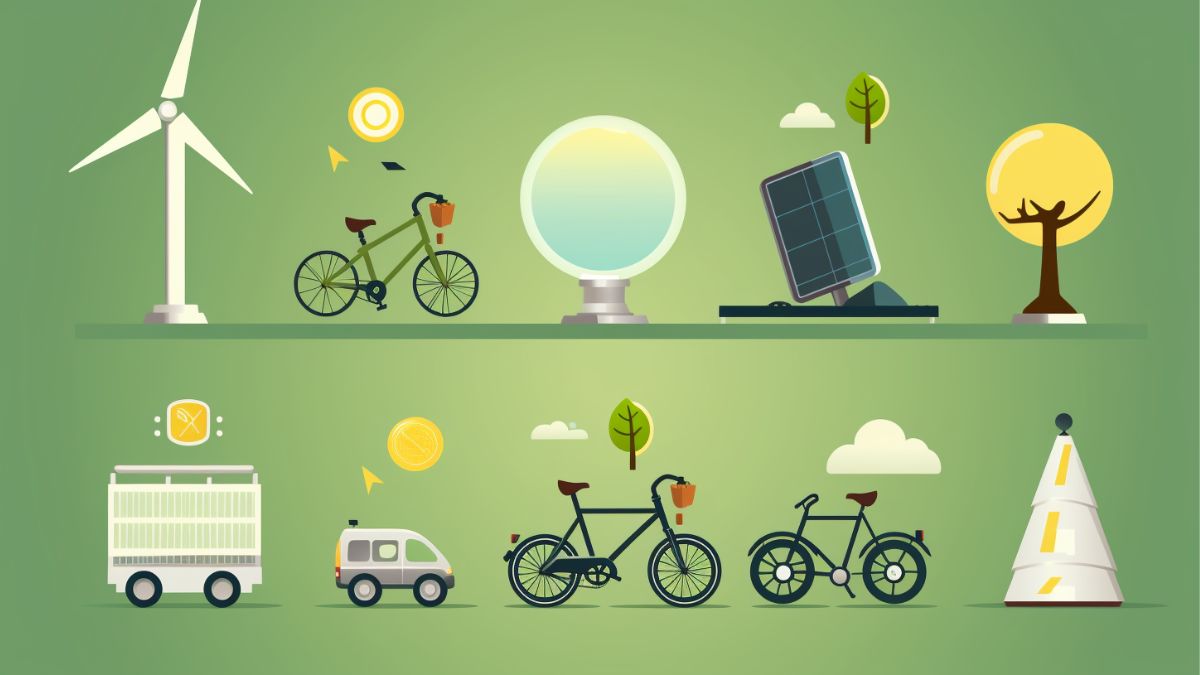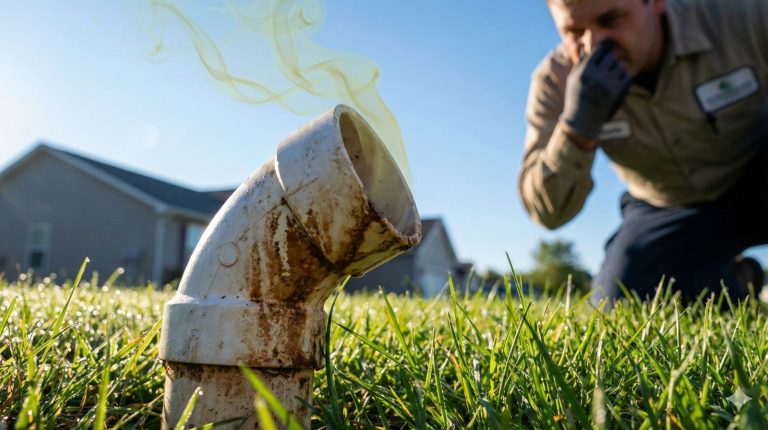In a world where skyscrapers dwarf trees and cars outnumber bicycles, minimizing your carbon footprint may seem like a Herculean task. Yet, it’s easier than you think! This article will guide you through eight simple yet effective methods to curtail your environmental impact.
By adopting these eco-friendly practices, not only will you contribute to our planet’s wellbeing, but you’ll also discover the financial benefits of living sustainably.
So, are you ready to go green?
Key Takeaways
- Replace old-style incandescent bulbs with CFLs and LEDs to reduce electricity consumption.
- Start recycling paper, cardboard, glass, and plastic, and compost organic waste.
- Inspect and improve the insulation of your home to reduce heating costs.
- Consider switching to energy-efficient appliances to save electricity and money.
Understanding Carbon Footprint
It’s crucial to understand what a carbon footprint is. It’s the total amount of greenhouse gases that are emitted into the atmosphere as a result of our daily activities, including the energy we use in our homes and the methods of travel we choose.
Grasping the impact of carbon footprint on climate change is a fundamental step towards creating a more sustainable lifestyle. The importance of understanding carbon emissions cannot be overstated, as they significantly contribute to global warming.
By learning ways to measure your carbon footprint, you can identify areas in your life where you can implement carbon footprint reduction strategies. Remember, your environmental impact is largely determined by your energy consumption.
Let’s work together to reduce our carbon footprints and foster a healthier planet.
Home Energy Efficiency
You can make your home more energy efficient by investing in energy-saving appliances and improving your home’s insulation. For instance, smart thermostats can help you manage your heating and cooling needs more efficiently, reducing your energy usage and carbon footprint.
Consider an energy audit to identify areas where your home is losing energy. Simple fixes like weatherstripping and installing energy-efficient windows can make a significant difference. And don’t forget solar panels. They provide renewable energy and can drastically reduce your reliance on fossil fuels.
| Energy-Saving Tip | Description | Potential Savings |
|---|---|---|
| Smart Thermostats | Programmable to reduce heating/cooling when not at home | Up to 15% on heating/cooling costs |
| Energy Audit | Identify energy inefficiencies in the home | Varies |
| Weatherstripping | Seal gaps around windows and doors | Up to 20% on heating/cooling costs |
| Solar Panels | Convert sunlight into electricity | Varies, can cover 100% of energy needs |
Join the green revolution and make your home a beacon of sustainability.
Recycling Practices
Recycling is not just good for the planet; it is also an easy way to reduce waste and save resources at home. The benefits of recycling range from saving energy to reducing landfill size.
Start by sorting plastics, paper, and metal. Many communities even offer single-stream recycling for ease. But don’t stop there! Composting organic waste, like food scraps, can enrich your garden and reduce methane emissions from landfills. This recycling method is crucial, showing the importance of composting in minimizing carbon emissions.
And remember, every bit helps. Even small changes can have a big recycling impact on the environment. So, join the eco-conscious community, use these recycling tips, and make a difference for our planet.
Insulation and Heating
Proper insulation is key to reducing energy consumption and keeping your home cozy. The benefits of insulation are numerous. It helps maintain a comfortable temperature and reduces noise. Additionally, insulation is a cost-effective solution that pays for itself over time.
Energy-efficient heating works hand in hand with insulation to ensure that your home uses less energy, thereby reducing your carbon footprint. While installing insulation may seem daunting, the process can be straightforward, especially when done by professionals.
There are various insulation materials to choose from. Classic options include fiberglass, while eco-friendly alternatives include recycled denim or sheep’s wool. When selecting insulation, consider your home’s requirements and your environmental commitment.
By investing in insulation and energy-efficient heating, you’re not only saving money but also contributing to a healthier planet.
Choosing Eco-Friendly Appliances
Choosing eco-friendly appliances can significantly lower energy consumption and, in turn, reduce the environmental impact. By incorporating energy-efficient technology into your home, you’re not just creating a sustainable home, but also contributing to power cost reduction.
Consider these eco-friendly appliances:
- Energy-efficient refrigerators: They use less electricity and help keep your food fresh.
- Green washing machines: These models consume less water and power.
- LED TVs: They use significantly less energy compared to traditional models.
- Eco-friendly microwaves: These appliances consume less power and increase efficiency.
- Energy saving dishwashers: They use less water and electricity.
Investing in eco-friendly appliances might cost more upfront, but the long-term benefits to both your wallet and our planet make it a worthwhile investment. Plus, they often work better and last longer.
Start making changes today, and join the renewable energy sources revolution.
Sustainable Commuting
It’s important to consider greener ways of commuting to significantly reduce the environmental impact. The benefits of public transit are numerous, from reducing traffic congestion to lowering your carbon footprint, it’s a win-win. Not only does it contribute to cleaner air, but it also engenders a sense of community among riders.
Bike commuting has its own set of advantages like the opportunity for exercise and zero emissions. Carpooling, too, is a viable option, lessening the number of cars on the road and sharing the burden of fuel costs.
If you do need to drive alone, consider carbon offset programs to counterbalance your emissions. By choosing eco-friendly transportation, you’re not only saving money but also contributing positively to our planet’s health.
Vehicle Maintenance
Transitioning from sustainable commuting, let’s shift gears to focus on vehicle maintenance, an equally important aspect of reducing your carbon footprint.
Your car isn’t just a means of transport—it’s part of your eco-friendly transportation strategy. Following a car maintenance checklist isn’t only crucial for your vehicle’s longevity, but it’s also a way to ensure fuel efficiency and reduce emissions.
Regular tune-ups, checking tire pressure, and timely oil changes can significantly improve your car’s fuel efficiency. In addition, consider exploring sustainable commuting options like carpooling or hybrid vehicles.
Your commitment to these simple steps will not only save you money but also contribute significantly to our collective responsibility of caring for our planet. Remember, every mile driven with care is a step towards a healthier environment.
Tree Planting
Planting trees isn’t just about beautifying your space, it’s a powerful way to capture and store carbon dioxide, helping to combat climate change. By engaging in tree planting initiatives, you’re not only reducing your carbon footprint, but also contributing to the reforestation efforts that are critical to our survival.
| Benefits of Tree Planting | Importance of Urban Trees | Tree Planting for Carbon Sequestration |
|---|---|---|
| Improves air quality | Provides shade and cooling | Stores carbon |
| Enhances biodiversity | Reduces urban heat island effect | Mitigates climate change |
| Boosts mental wellbeing | Improves city aesthetics | Promotes healthier ecosystems |
The impact of reforestation is immense and it’s important that we all play our part. So, get involved, plant a tree, and become part of the solution. Every tree counts when it comes to preserving our beautiful planet.
Workplace Energy Conservation
In the office, we can all do our bit to conserve energy and cut back on carbon emissions. Adopt energy saving tips like using efficient lighting solutions and sustainable heating options. Opt for LED lights instead of traditional bulbs, and programmable thermostats to manage temperatures efficiently.
Green office practices can extend to using eco-friendly appliances. These appliances not only consume less electricity but also last longer, resulting in less waste. Encourage colleagues to turn off lights and computers when not in use. Opt for video calls over travel to reduce carbon emissions from transportation.
By implementing these simple changes, you’ll contribute to a healthier planet and a greener workplace. Every effort counts, and together we can make a big difference.
Furthermore, if you work in a larger industry or organization, your workplace efforts can scale up to create a substantial environmental impact. In addition, if your company has an extensive supply chain, you can benefit from understanding and managing your indirect emissions (known as Scope 3 emissions), which cover emissions from suppliers, operations, and product lifecycles. For detailed guidance, you can refer to the scope 3 guide. By tracking these emissions, your business can implement strategies that reduce your overall carbon footprint well beyond the office.
Frequently Asked Questions
How can I educate my children about the importance of reducing carbon footprints?
“Did you know the average person produces 4.6 tons of CO2 annually? Teach your kids about reducing carbon footprints through eco-friendly games, green storytelling, nature exploration, home gardening, and waste segregation.”
What are some carbon offsetting initiatives that I can participate in?
You can offset air travel emissions, invest in green opportunities, participate in sustainable agriculture, subscribe to renewable energy, and join community reforestation projects. These initiatives significantly contribute to carbon offsetting.
Are there any government incentives or programs available to help transition towards a more eco-friendly lifestyle?
Yes, several government programs provide assistance for eco-friendly transitions. From federal rebates on energy efficient appliances and solar panel incentives to green loans for sustainable housing, these initiatives encourage a greener lifestyle.
How does the carbon footprint of renewable energy sources compare to traditional sources of energy?
“Putting all your eggs in one basket” with traditional energy has drawbacks. Renewable energy efficiency trumps fossil fuels. Sustainable power systems emit less CO2, according to carbon comparison studies, lessening environmental impact. Embrace this change!
Can you suggest some apps or tools that help track and reduce personal carbon footprints?
Sure! Apps like MyCarbon, JouleBug, and Oroeco are great carbon calculators. They evaluate your daily habits, suggest sustainable innovations and lifestyle adjustments, demonstrating tech’s impact in managing your environmental footprint.
Conclusion
Embrace these eight methods and you’ll not only reduce your carbon footprint, but also save money.
By juxtaposing these smart energy-saving practices with your current habits, you’ll feel the satisfaction of making a difference.
It’s a win-win, for both your wallet and our precious planet.
Take the first step today, and let’s work towards a more sustainable future together.




